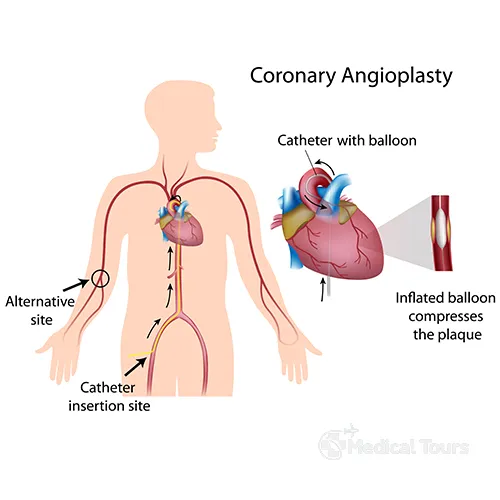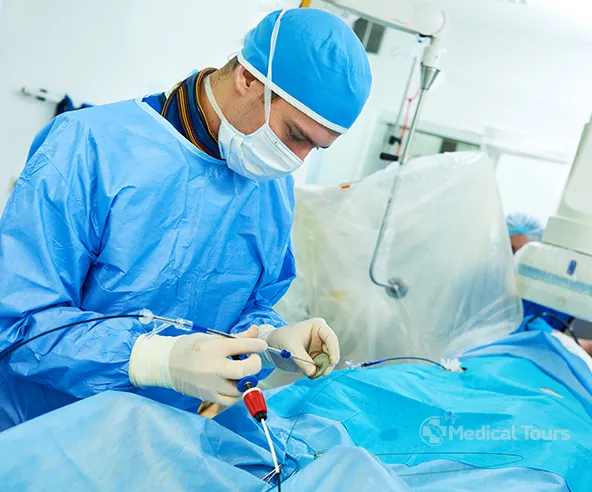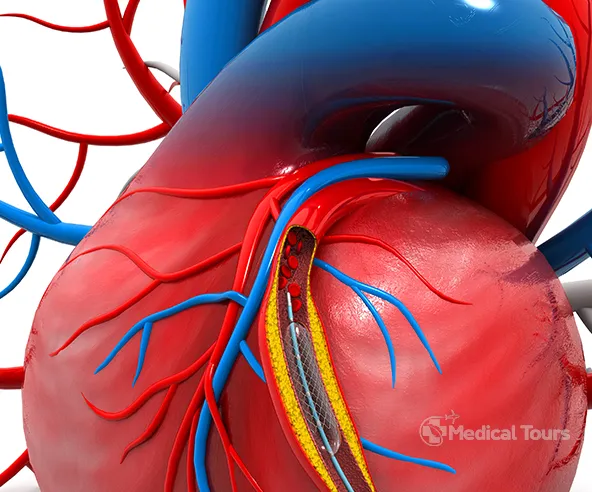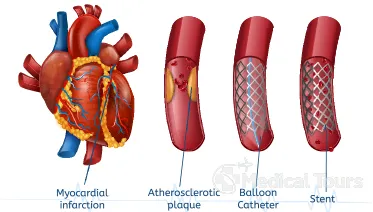Coronary Angioplasty is a method of surgery used for treating cardiac disorders. Mostly this surgery is done in case of serious cardiac complications, especially just after a heart attack or a cardiac arrest. If a Coronary angioplasty is performed by a cardiac surgeon within the first few hours of a cardiac arrest or a heart failure or heart attack, then the surgery can effectively save the life of the patient and can also reduce the risk factors by huge proportions. But it must be remembered that, if the surgery after a heart attack or a cardiac arrest is delayed then it will surely increase complications and risk factors and can also lead to death. Doctors and cardiologists, in many cases, have found that after an angioplasty surgery, patients have gotten relief from the severe complications and symptoms of heart diseases.
In this procedure of cardiac surgery, the aim is to make the process of blood supply much smoother. coronary angioplasty surgery helps in opening the blood veins and vessels known as coronary arteries that supply blood to the heart so that the impure blood gets properly purified and the purified blood carrying oxygen can spread from the heart to different parts of the body.
Coronary angioplasty is also known as percutaneous transluminal coronary angioplasty or percutaneous coronary intervention because this surgical procedure involves the application or insertion of a machine known as a coronary artery stent inside the heart after the angioplasty surgery is over.
There are some specific procedures for performing a cardiac angioplasty surgery. First, the cardiologists and health care experts advise the anesthetist to perform either local or complete anesthesia. After the patient’s body and senses become numb, the doctor will perform a small incision either in the arm or within the groin. The nurse will gently insert a sac-like structure known as a catheter with a tiny inflatable balloon-like opening at the end into the arteries of the heart. The catheter is taken to the arteries and into those portions that are damaged by diagnosing the heart using an X-ray imaging technique and within the blocked portions of the arteries, the balloon-like structure is inflated. This helps in further widening the arterial walls and helps to move out the lipid deposits and other wastes such as fat and plaque in these arterial walls. After this surgery is done, purified blood can flow easily from the heart to the other parts of the body. The stent machine is also used in some cases after an angioplasty surgery that helps in keeping up with proper heartbeat and a good supply of blood from the heart to the other body parts because the stent machine helps in opening the arterial blood vessels and keeps the heart healthy by lowering the possibilities of further complications.
In case of a heart attack or a cardiac arrest, a cardiac angioplasty surgery is a must recommendation by a health care expert. But after performing a cardiac angioplasty surgery, there are chances of getting certain risk factors, because coronary angioplasty surgery is quite an extensive and a major surgery that might create much stress on the body and the patient’s overall health. In fact, in many cases, it has been found that angioplasty increases the risks of a cardiac emergency. The most common risk factors and complications that are associated with cardiac angioplasty surgery are listed here as follows:
Cardiac diseases are some of the most common diseases that are found today to occur among people, not only in India but also throughout the world. People should have proper knowledge about the different conditions of the heart and measures to treat them in order to maintain a good and healthy heart. There are different methods of treating cardiac diseases, and one of them is coronary angioplasty. Several types of coronary angioplasty surgery that are performed in India. Some of them are as follows:
Before going for a coronary angioplasty surgery, it is crucial to talk to your cardiac surgeons and concerned health care experts and discuss thoroughly your health conditions, so that the surgery does not increase any further risks or complications for you. So, before the cardiac angioplasty surgery, the patient should be sure to discuss all the necessary measures and precautionary steps that should be taken before the surgery. Some of the most important steps to be followed before the cardiac angioplasty surgery are given here as follows:
After the cardiac angioplasty surgery is done and after the patient returns home, there are certain home care procedures too. Some of them are listed below:
The estimated cost of Coronary Angioplasty surgery in India starts from $2000 USD and can go up to a maximum value of $4000 USD which is around INR 158609 to 317218. The cost of coronary angioplasty surgery in India varies from state to state. And it also depends on several factors such as how the surgery is performed, the patient's condition after the heart attack, the cost of the hospital and the specialist in which the surgery is performed, the experience of the surgeon, and more.
The time required to recover after a cardiac angioplasty surgery will depend on the condition of the patients, but generally, it takes 2 to 3 weeks.
Since cardiac angioplasty surgery is a long surgery and an extensive process, so it will take 30 minutes to 2 hours while perform the surgery.
The center blood is supplied by the coronary arteries and arterioles.
There will be no acute pain after a cardiac angioplasty surgery, but there might be mild pain after the surgery.
Follow the instructions of your physician and do not lift heavy weights and try to live a disciplined life and have healthy and nutritious food.



